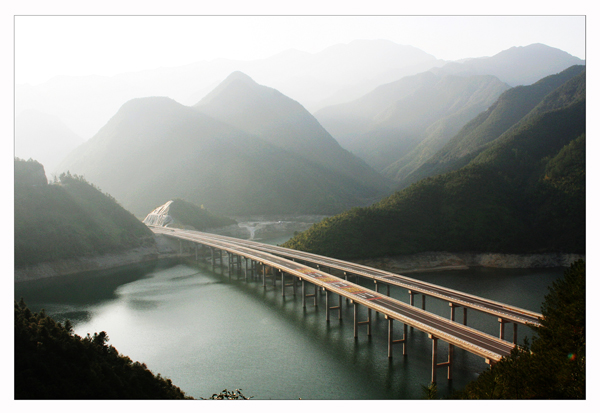Overview of Lishui transport

Lishui-Longquan Expressway [Photo provided to chinadaily.com.cn]
Lishui, situated at the intersection of the Yangtze River Delta integration and Haixi Economic Zone, is the eco-tourism destination of the Yangtze River Delta city group and the bridgehead connecting Haixi Economic Zone with Zhejiang province, giving the city superior geographical advantages.
In recent years, Lishui has made remarkable achievements in transport development, especially in linking its counties through expressways, which has laid a solid foundation for the economic and social development of transport.
Highways
By the end of 2018, the city had 3,229 highways, with a total length of 15,481 kilometers, 419 km of expressways, 242 km of first-class highways, 1,016 km of second-class highways, 438 km of third-class highways, and 13,366 km of fourth-class and quasi-fourth-class highways.
Since the beginning of the 13th Five-Year Plan (2016-2020), 12 major projects have been built, including the Longquan-Pucheng Expressway and the Lishui north interchange of the Jinhua-Lishui-Wenzhou Expressway, with a length of 127.4 km and an investment of 8.24 billion yuan ($1.17 billion).
Road transport
In response to the people's growing needs for a better life, Lishui is vigorously developing public transport, promoting the green and intelligent development of transport, and striving to provide improved transport services.
By the end of 2018, the city had 124 passenger stations, including two first-level stations, seven second-level stations, three third-level stations, 112 rural passenger stations (quasi-fourth-level), operating 1,240 buses, with annual passenger volume of 20.74 million person-times.
In addition, by the end of 2018 there were 888 buses in the city, including 428 clean energy buses. Mobile payment achieved full coverage in the city's buses, and bus cards can be commonly used throughout the city. There were 857 taxis, including 395 clean energy taxis. There were 12,830 public bicycles and 436 rental spots. The city had 39 driving training institutions and 1,034 car maintenance enterprises.
Water transport
By the end of 2018, the city's inland river navigation length was 471 km. There were seven operational port berths, with annual capacity of 3.07 million tons of berths and port cargo throughput of 2.89 million tons.
In recent years, Jingning, Suichang, Qingtian, Yunhe and Longquan have all set up ferry companies, benefiting 135,000 people in 193 administrative villages in 30 townships, and making up for the shortage of public transport in reservoir areas.
At present, Lishui is implementing a regulating project for Oujiang waterway covering 75.8 km, which will carry out all aspects of regulation and upgrading of Oujiang River.

 Lishui establishes intelligent biodiversity monitoring system
Lishui establishes intelligent biodiversity monitoring system New fungus species discovered in Qingyuan
New fungus species discovered in Qingyuan Lishui transforms weirs to aid fish migration
Lishui transforms weirs to aid fish migration